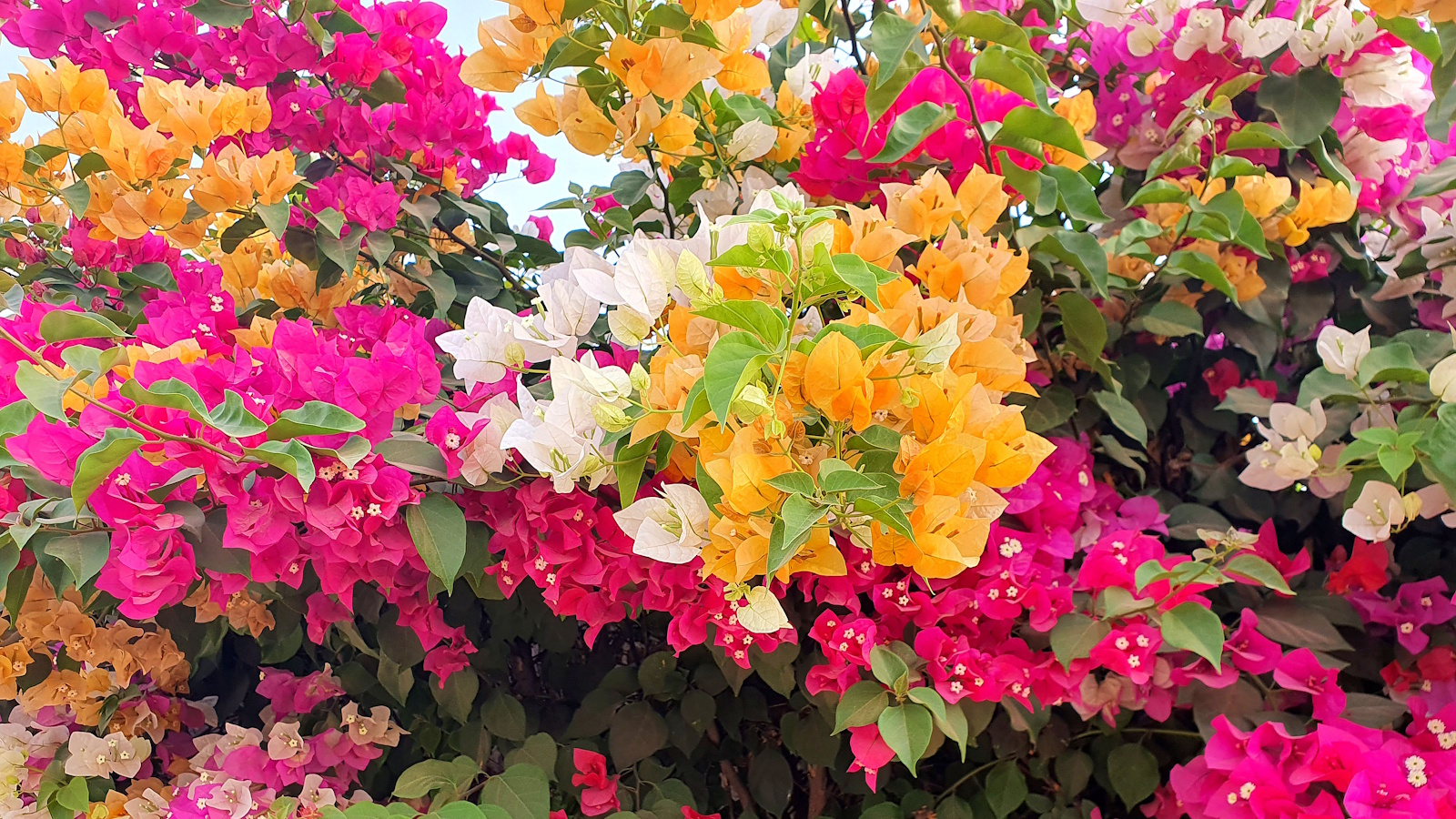
If you grow bougainvillea in your yard, you have probably enjoyed a long summer season of vibrant blooms. There are over 300 varieties of bougainvillea, found in shades of pink, white, yellow, orange and red, perfect for adding color to a sunny, south-facing wall or fence.
Whatever color or variety you grow, whether neon pink or pristine white, it is important to know how to care for your climbing plant during the fall. Those long summer days are now but a distant memory, with strong winds, heavy rainfall and plummeting temperatures common during the fall months.
As tender climbers that are best suited to US hardiness zones 9 to 11, your bougainvillea will need protection during the fall and winter, especially in cooler regions. So, whether your plant is in the ground or perhaps you grow bougainvillea in pots, there are a few simple steps to be completed in the fall that will ensure your plants return better than ever next year.
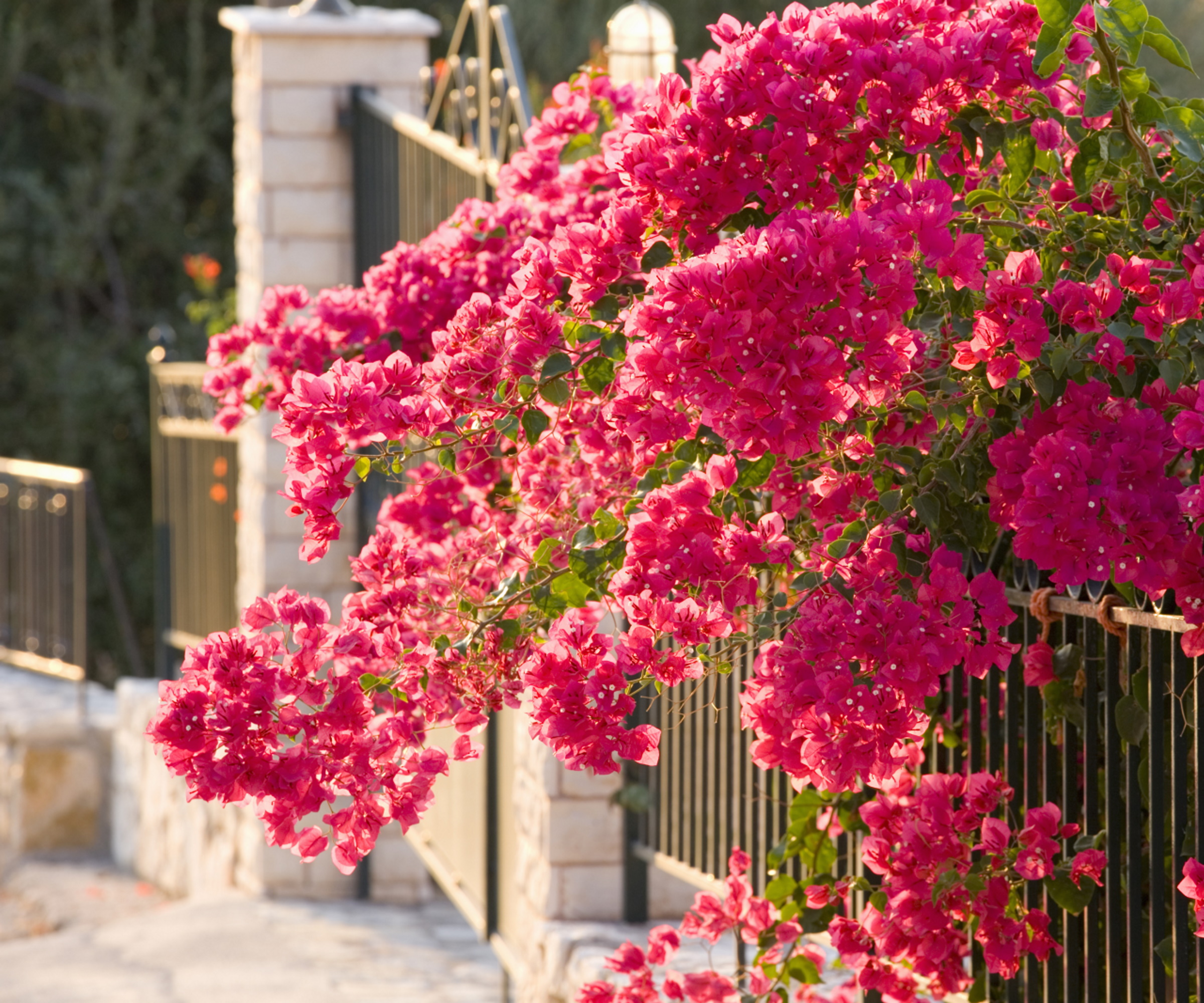
What to do with bougainvillea in the fall
Native to tropical regions in South America, including Brazil and Argentina, bougainvillea plants do not respond well to cool temperatures, heavy rain or stormy weather. With a preference for sunshine and warmth, thriving in regions found in US hardiness zone 10, bougainvillea plants require a little love and attention during the fall. Follow our three simple steps here to learn how to care for and grow bougainvillea as the seasons change.
1. Keep watering your bougainvillea
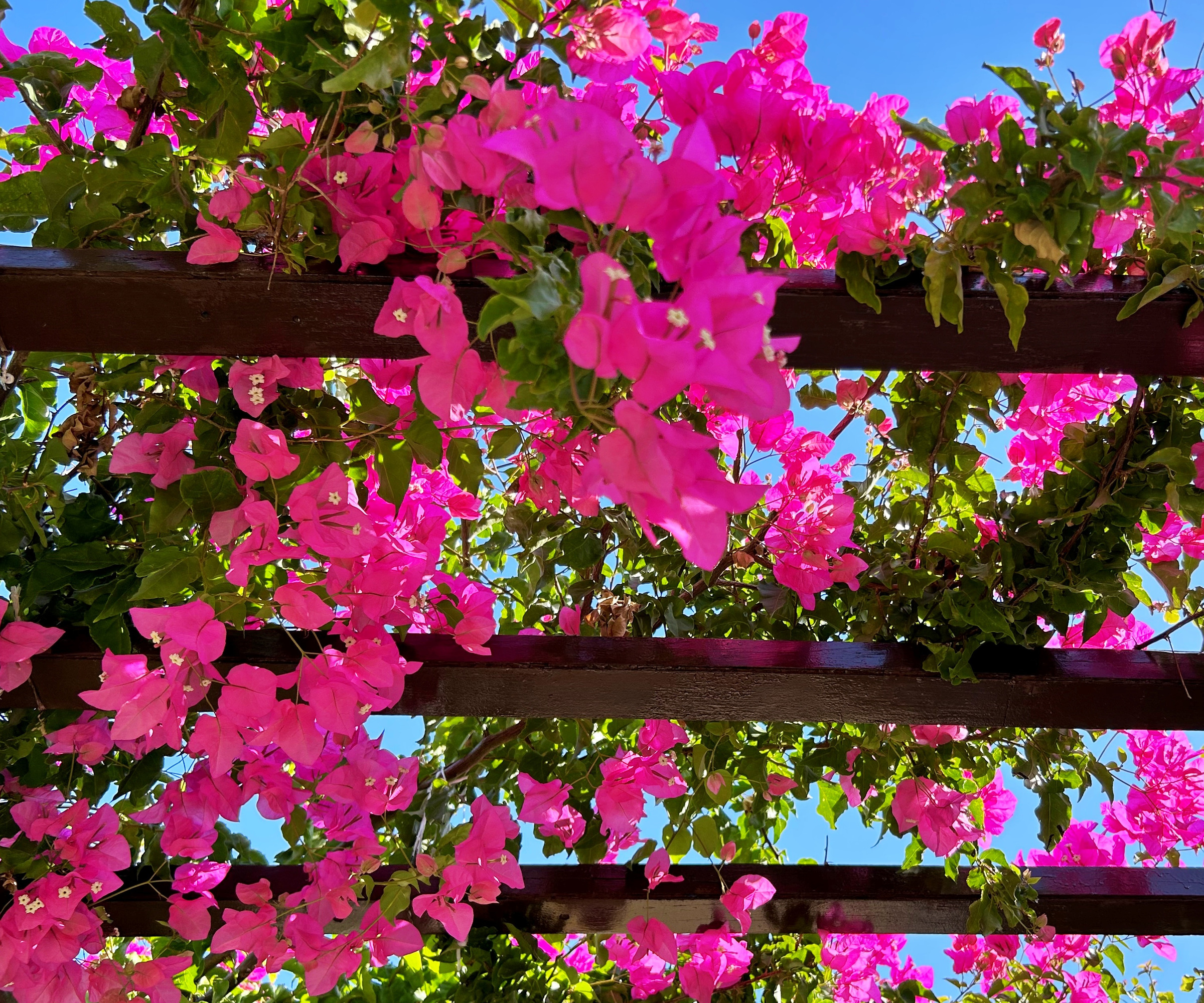
'Bougainvillea are some of the best climbing plants that love sunny, warm and dry weather,' says Bert Bast, garden expert and owner of Bast Brothers Garden Center. 'Allow them to dry out in between waterings, but infrequent deep waterings in fall will help your plants through winter dormancy.'
As Bert says, though bougainvilleas prefer dry, warm conditions, you should still water during the fall, particularly if there is little rainfall. I suggest continuing to provide water until the first frost arrives. In cooler weather, less water will be needed, but keeping your plant sufficiently hydrated is recommended.
One handy tool to keep an eye on watering is a soil moisture meter, available from Walmart, which will reveal when the soil is dry and when you need to get the watering can out of the garden shed. As a general guide, reduce watering from September once flowering has finished, watering once or twice a month.
2. Move bougainvillea pots to a sheltered location
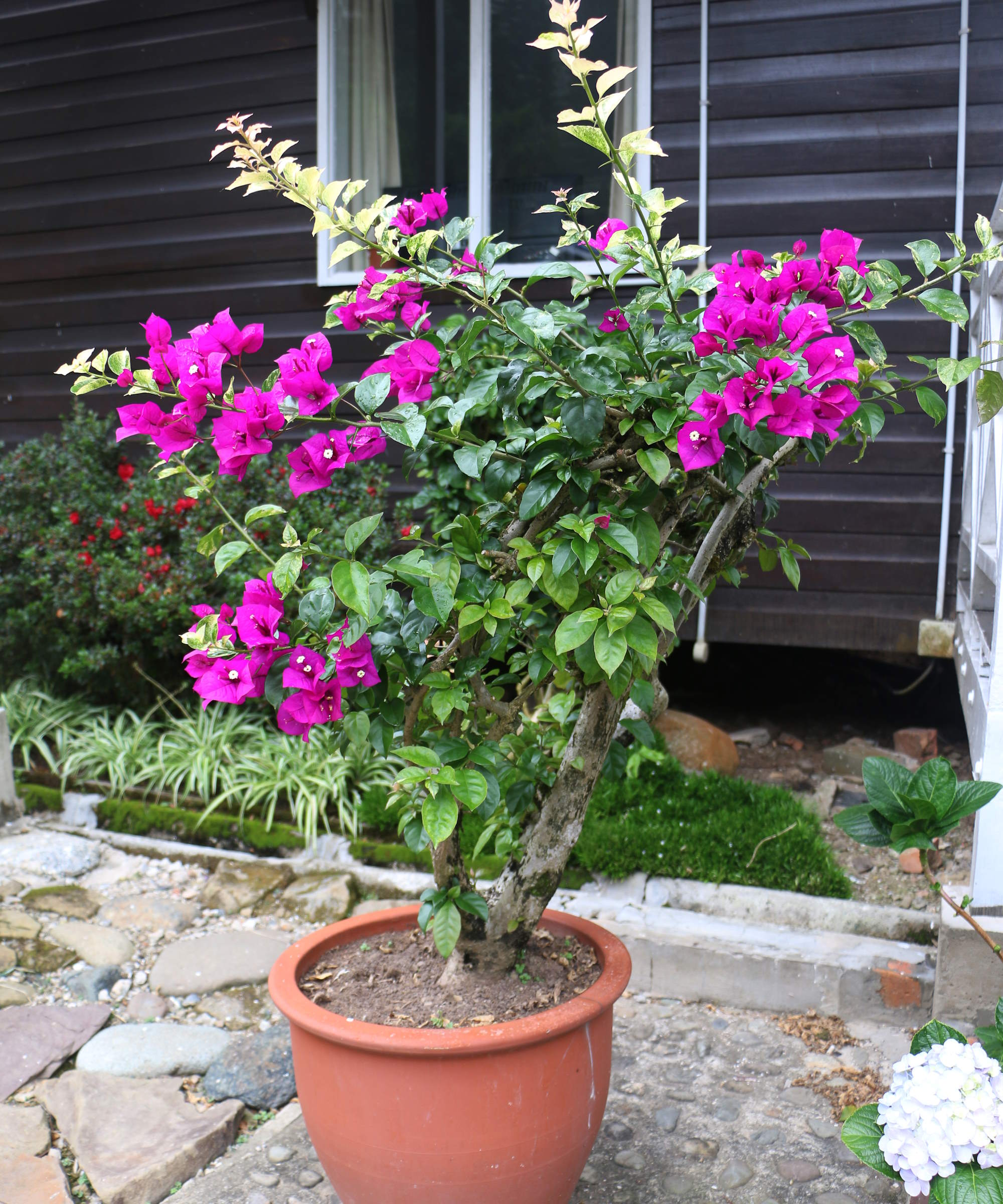
'Bougainvillea plants like sun and warmth in the spring and summer,' says Sam Niemann, garden expert and founder of Grown by Design, a boutique landscape design firm based in San Diego, and Bleume, a plant fertilizer start-up. 'In October and November, it is a good idea to move potted plants to a sheltered corner of the yard, or indoors to a conservatory or greenhouse,' Sam adds.
Generally speaking, bougainvillea plants don't like the temperature dropping below 50°F/10°C, so it is best to first move any pots closer to your home, or near a protective exterior wall in September or October. Towards November, it is best to move the pot indoors, particularly if you reside in cooler regions like US hardiness zone 7 or below.
If you live in a warm, southerly region and your bougainvillea is planted in the ground, monitor the weather for any unexpected snow or frost. In extreme years when the fall and winter temperatures drop, consider using a frost cloth, available from Walmart, which can help to keep your plant in good health.
3. Mulch your soil
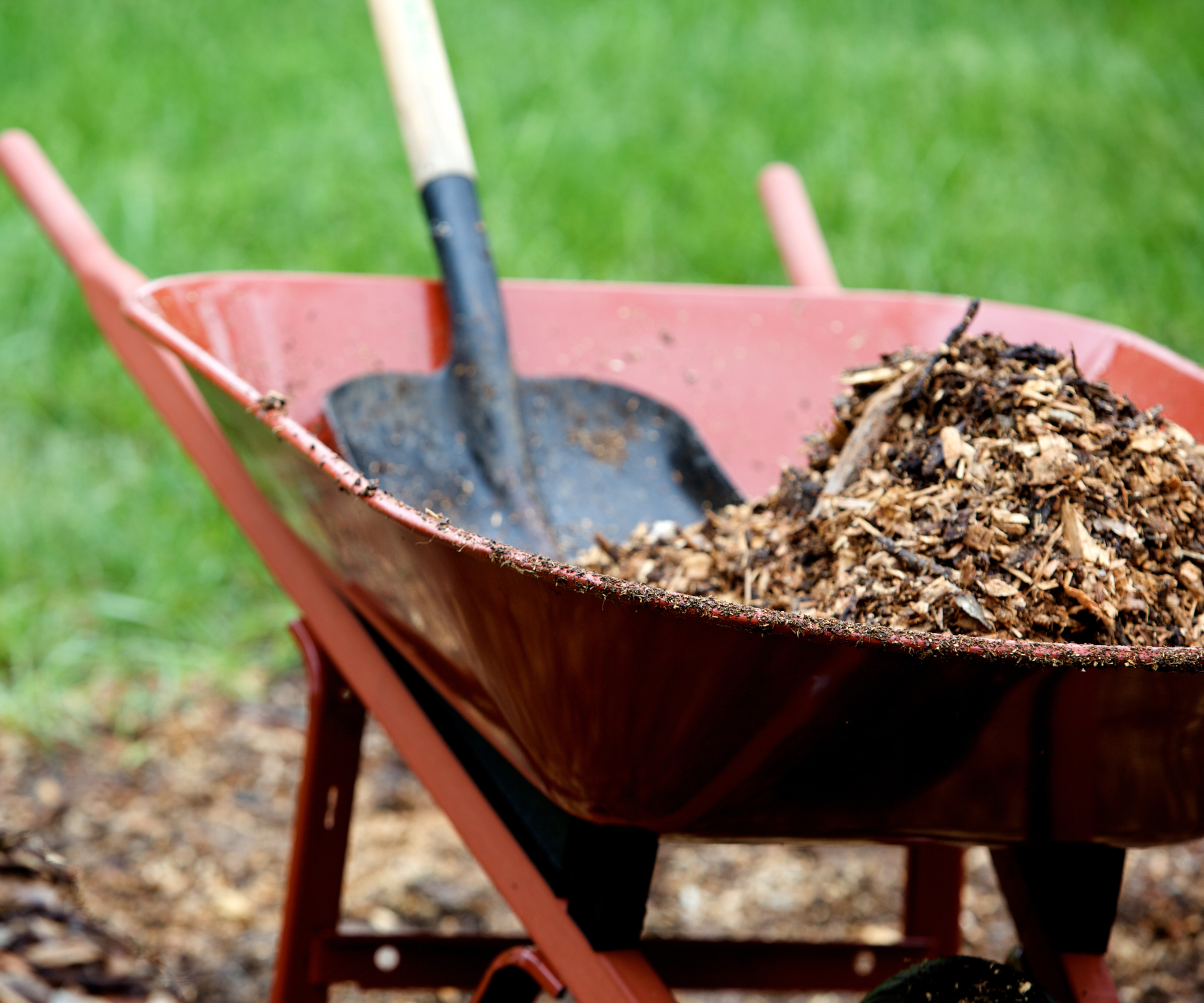
Mulching in the fall is a good idea as it will help protect your bougainvillea plants during the colder months of the year. Add a layer of good quality pine or straw mulch around the base of your climbers in the fall months, doing so before winter gets underway. Pine bark mulch is available from Walmart.
Whether grown in borders or pots, I suggest applying a thick one to two-inch layer of mulch around the base, making sure to leave a small gap around the stem to prevent moisture buildup that can damage the trunk. This will improve the soil quality, suppress weeds and give your bougainvillea a great boost for next year.
This pine straw mulch is ideal for landscaping, and will enrich your soil and provide a decorative top layer to enhance your flowerbeds.
FAQs
When should I stop feeding my bougainvillea?
Knowing when, and when not, to fertilize bougainvillea is important. While they are hungry plants, stop feeding at the end of the summer, usually around September. You should not feed your bougainvillea during the fall months. This is a common fertilizing mistake that will do more harm than good. Fertilizing can commence again in the spring, usually around April or May, using a bloom booster fertilizer to encourage a spectacular summer display.
While you might want to tidy up your bougainvillea plants ahead of winter, it is best to put the pruning shears away at least until late winter. In terms of how to prune bougainvillea, any major work can be done in late winter, usually around March, when your bougainvillea is in a dormant state. Blooms will be produced on new growth, so it is best to prune before it begins to leaf out in the spring. During the growing year, you can complete any light pruning as required, although it is a good idea to avoid snipping during extreme heat as this can damage your plant.







